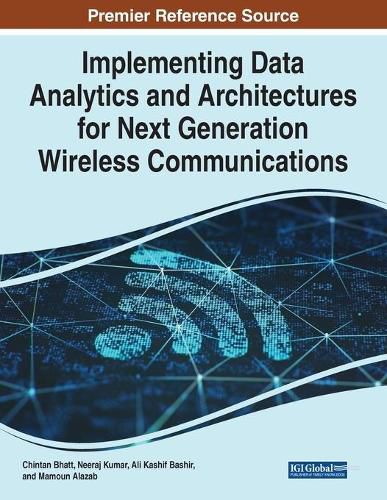Readings Newsletter
Become a Readings Member to make your shopping experience even easier.
Sign in or sign up for free!
You’re not far away from qualifying for FREE standard shipping within Australia
You’ve qualified for FREE standard shipping within Australia
The cart is loading…






This title is printed to order. This book may have been self-published. If so, we cannot guarantee the quality of the content. In the main most books will have gone through the editing process however some may not. We therefore suggest that you be aware of this before ordering this book. If in doubt check either the author or publisher’s details as we are unable to accept any returns unless they are faulty. Please contact us if you have any questions.
Wireless communication is continuously evolving to improve and be a part of our daily communication. This leads to improved quality of services and applications supported by networking technologies. We are now able to use LTE, LTE-Advanced, and other emerging technologies due to the enormous efforts that are made to improve the quality of service in cellular networks. As the future of networking is uncertain, the use of deep learning and big data analytics is a point of focus as it can work in many capacities at a variety of levels for wireless communications.
Implementing Data Analytics and Architectures for Next Generation Wireless Communications addresses the existing and emerging theoretical and practical challenges in the design, development, and implementation of big data algorithms, protocols, architectures, and applications for next generation wireless communications and their applications in smart cities. The chapters of this book bring together academics and industrial practitioners to exchange, discuss, and implement the latest innovations and applications of data analytics in advanced networks.
Specific topics covered include key encryption techniques, smart home appliances, fog communication networks, and security in the internet of things. This book is valuable for technologists, data analysts, networking experts, practitioners, researchers, academicians, and students.
$9.00 standard shipping within Australia
FREE standard shipping within Australia for orders over $100.00
Express & International shipping calculated at checkout
This title is printed to order. This book may have been self-published. If so, we cannot guarantee the quality of the content. In the main most books will have gone through the editing process however some may not. We therefore suggest that you be aware of this before ordering this book. If in doubt check either the author or publisher’s details as we are unable to accept any returns unless they are faulty. Please contact us if you have any questions.
Wireless communication is continuously evolving to improve and be a part of our daily communication. This leads to improved quality of services and applications supported by networking technologies. We are now able to use LTE, LTE-Advanced, and other emerging technologies due to the enormous efforts that are made to improve the quality of service in cellular networks. As the future of networking is uncertain, the use of deep learning and big data analytics is a point of focus as it can work in many capacities at a variety of levels for wireless communications.
Implementing Data Analytics and Architectures for Next Generation Wireless Communications addresses the existing and emerging theoretical and practical challenges in the design, development, and implementation of big data algorithms, protocols, architectures, and applications for next generation wireless communications and their applications in smart cities. The chapters of this book bring together academics and industrial practitioners to exchange, discuss, and implement the latest innovations and applications of data analytics in advanced networks.
Specific topics covered include key encryption techniques, smart home appliances, fog communication networks, and security in the internet of things. This book is valuable for technologists, data analysts, networking experts, practitioners, researchers, academicians, and students.